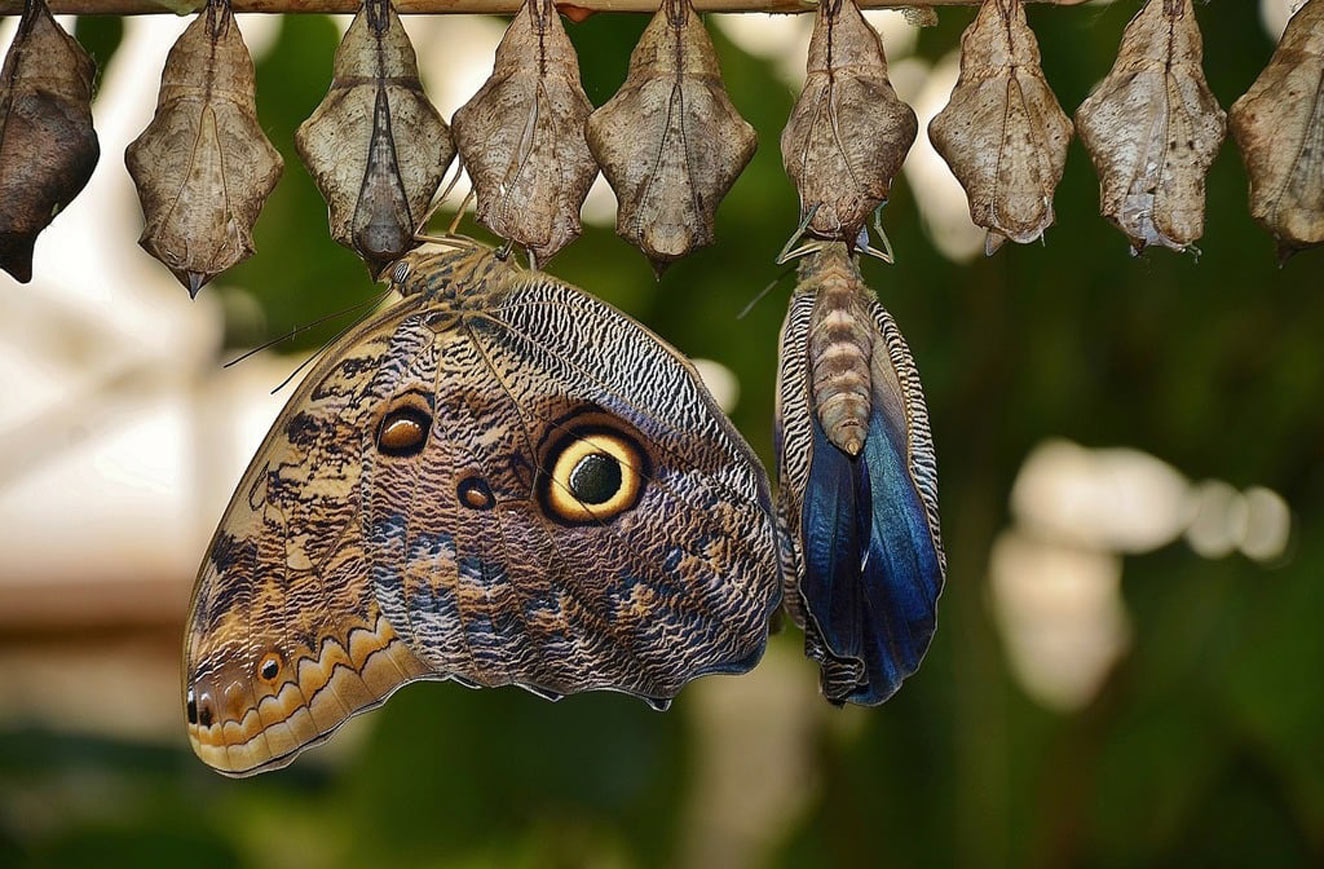Butterfly pavilions are enchanting places where visitors can witness the delicate beauty and vibrant colors of butterflies up close. Central to the magic of these pavilions are chrysalis houses; specialized environments where the remarkable transformation from caterpillar to butterfly takes place.
Let’s explore the purpose of chrysalis houses, the common conditions maintained inside them, and their crucial role in butterfly conservation and education.
The Purpose of Chrysalis Houses
Chrysalis houses, also known as emergence chambers, are designed to provide a safe and controlled environment for butterfly pupae (chrysalises) to complete their metamorphosis. The primary purposes of these houses include:
- Protection: Chrysalis houses protect pupae from environmental hazards and predators. In the wild, chrysalises are vulnerable to weather changes, parasites, and predators such as birds and insects. A controlled environment ensures a higher survival rate for developing butterflies.
- Observation and Education: These houses offer a unique opportunity for visitors to observe the metamorphic process, which is typically hidden in nature. Educators and enthusiasts can watch caterpillars form chrysalises and emerge as butterflies, providing a fascinating and educational experience.
- Conservation and Breeding: Many butterfly pavilions participate in conservation and breeding programs to help sustain butterfly populations. Chrysalis houses play a vital role in these efforts by providing a controlled setting for the successful rearing of butterflies, which can then be released into the wild or used in further breeding efforts.
Common Conditions Inside Chrysalis Houses
To ensure the successful development of butterflies, chrysalis houses must replicate the natural conditions required for pupae to thrive. Common conditions maintained inside these houses include:
- Temperature: The temperature inside a chrysalis house is typically kept within a specific range to mimic the natural environment of the butterfly species. For most tropical butterflies, this means maintaining a warm temperature of around 75-85°F (24-29°C). Consistent temperatures are crucial as fluctuations can negatively impact the development process.
- Humidity: High humidity levels are essential for the proper development of chrysalises. Humidity in chrysalis houses is generally kept between 70-90%. This mimics the moist conditions of tropical and subtropical regions where many butterfly species originate. Humidifiers and regular misting help maintain these levels.
- Ventilation: Good airflow is necessary to prevent mold growth and to provide oxygen to the developing pupae. Chrysalis houses are equipped with ventilation systems that ensure a steady supply of fresh air while maintaining the appropriate temperature and humidity levels.
- Light: While not as critical as temperature and humidity, light plays a role in the natural rhythm of the butterflies. Chrysalis houses often have a day-night cycle to simulate natural conditions, though the intensity and duration of light exposure can vary based on the species being reared.
- Safety and Cleanliness: Chrysalis houses are designed to be clean and safe environments. Regular cleaning and monitoring help prevent the spread of disease and mold, which can be detrimental to developing butterflies. The houses are also free from predators and contaminants that could harm the pupae.
The Role of Chrysalis Houses in Butterfly Conservation
Chrysalis houses are integral to butterfly conservation efforts. Many butterfly species are threatened by habitat loss, climate change, and pesticide use. By providing a controlled environment for breeding and rearing, chrysalis houses help boost butterfly populations and preserve genetic diversity.
- Breeding Programs: Butterfly pavilions often engage in breeding programs to increase the population of endangered species. By carefully managing the conditions inside chrysalis houses, they ensure a high survival rate for the pupae, contributing to the success of these programs.
- Research and Monitoring: Chrysalis houses allow researchers to study the development and behavior of butterflies in detail. This research can inform conservation strategies and provide insights into the needs and vulnerabilities of different species.
- Public Awareness and Education: By showcasing the metamorphic process, chrysalis houses educate the public about the importance of butterflies and the threats they face. Increased awareness can lead to greater support for conservation efforts and more environmentally friendly practices.
Visiting Our Chrysalis House
For visitors to The Butterfly House at Navy Pier, our small chrysalis house is a must-see, and it’s right outside the main house structure. Don’t hesitate to ask any questions about the species you see, the conditions maintained inside the chrysalis house, and the conservation efforts in place. We love talking about the behind-the-scenes process!
In Summary
Chrysalis houses are a vital component of all butterfly pavilions, providing a controlled environment for the delicate process of metamorphosis. They play a crucial role in protecting pupae, facilitating research, and educating the public about the incredible life cycle of butterflies. By visiting and supporting butterfly pavilions, you contribute to the conservation efforts that help ensure these beautiful creatures continue to thrive for generations to come.
Come see our chrysalis house at Navy Pier today, it’s fun for kids and adults alike!





